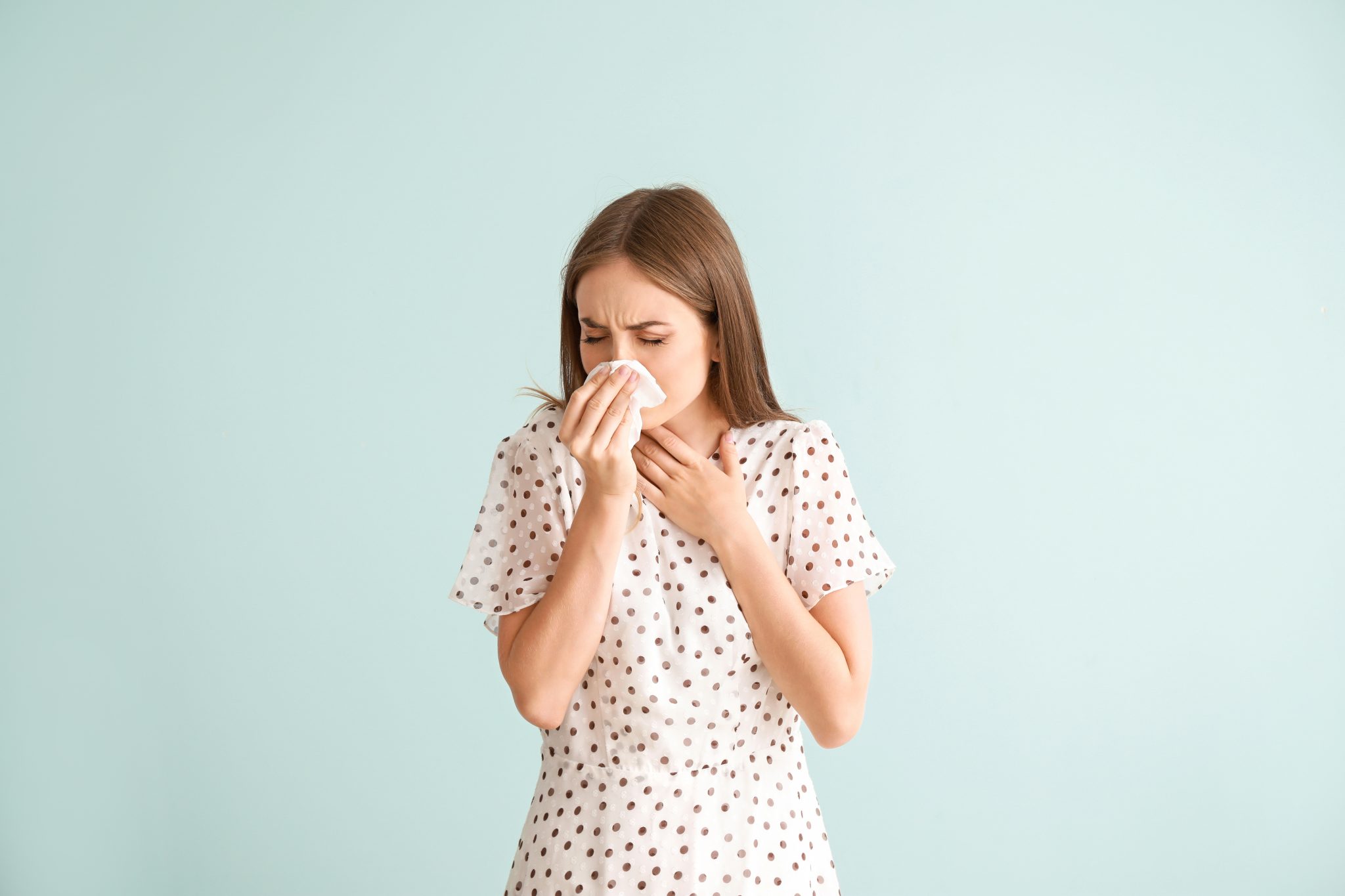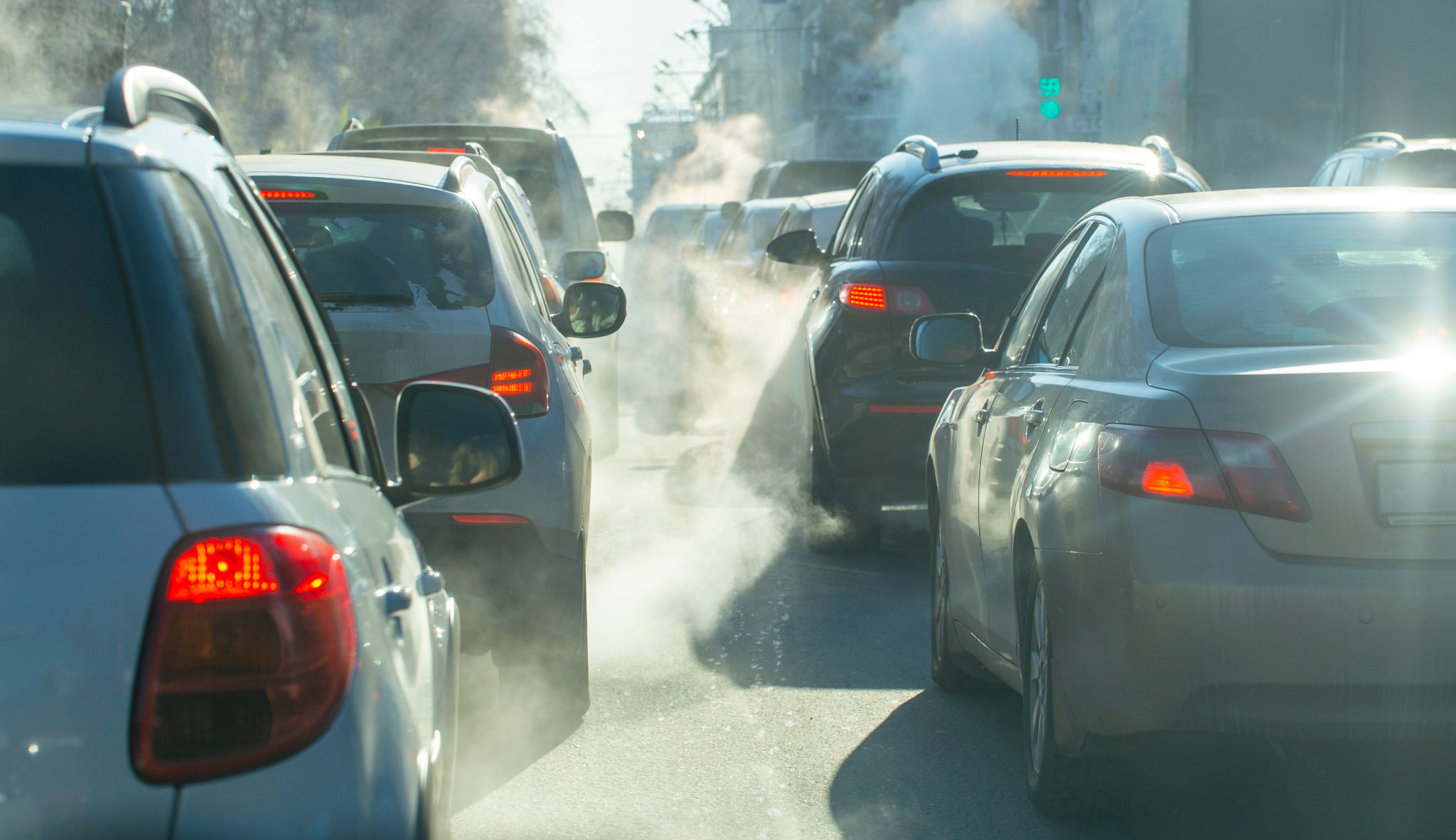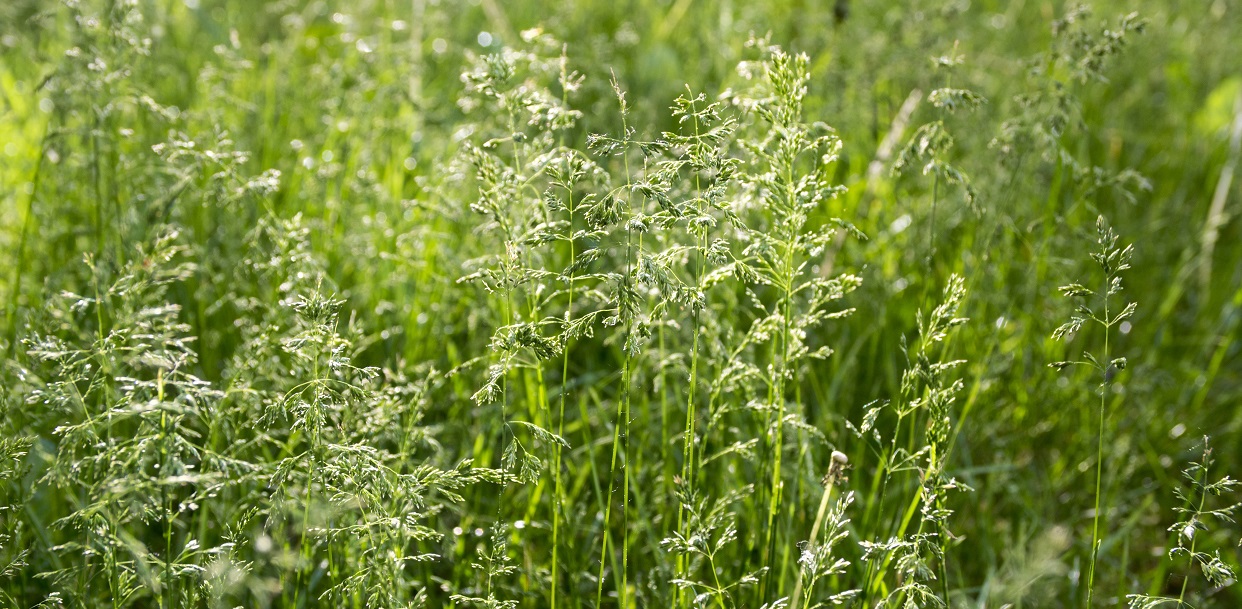A Deep Dive into Summertime Allergies
As the warmth of summer graces us with its presence, many of us are eager to embrace outdoor activities and soak up the sun. However, along with the barbecues, beach days, and sunny strolls, comes an uninvited guest: allergies. For many people, summer is synonymous with sniffling, sneezing, itchy eyes, and other symptoms that signal the onset of seasonal allergies. Let’s delve into what exactly causes summertime allergies, how they impact us, and what we can do to manage them better.
The Cause: Summer Allergens
Seasonal allergies, also known as hay fever or allergic rhinitis, are triggered by allergens—substances that the immune system mistakenly identifies as harmful. When the body encounters these allergens, it responds by producing a type of antibody called Immunoglobulin E (IgE), leading to an allergic reaction.
During the summer months, the primary culprits are pollens from grasses, weeds, and trees. While spring is most commonly associated with tree pollen allergies, summertime often sees a rise in grass pollens (such as Timothy grass, Kentucky bluegrass, and ryegrass) and weed pollens (like ragweed, sagebrush, and pigweed). Mold spores, which thrive in warm, humid environments, also become more prevalent during summer, contributing to allergic symptoms.
The Impact: Symptoms of Summertime Allergies
The allergic reaction sparked by these allergens can result in a variety of allergy symptoms, many of which can be quite discomforting. These symptoms typically include:
- Sneezing
- Runny or congested nose
- Itchy, watery, or red eyes
- Coughing
- Itchy throat or ears
- Fatigue
These symptoms can severely affect an individual’s quality of life, leading to disturbed sleep, irritability, and an inability to fully enjoy outdoor activities during the summer season.
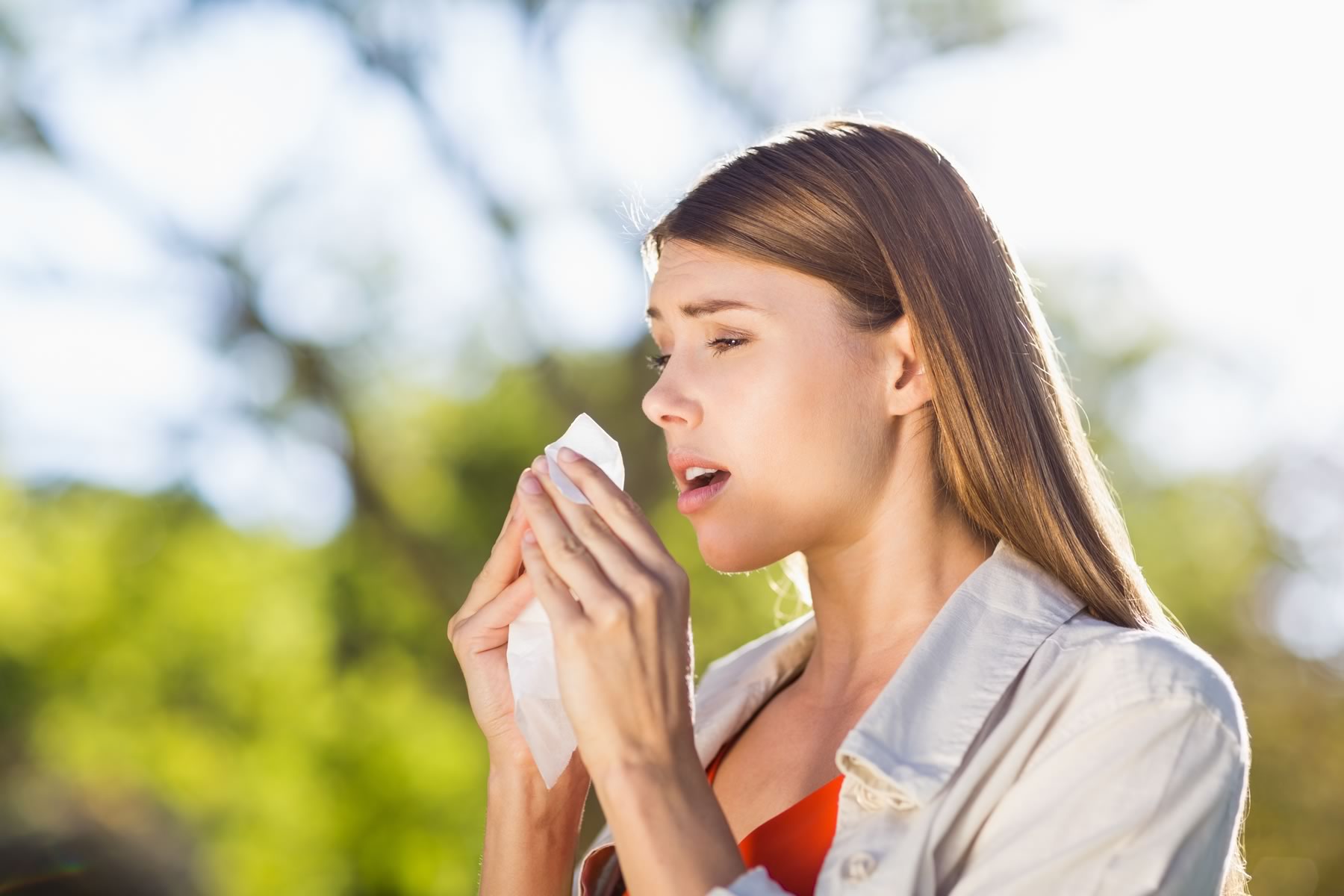
Managing Summertime Allergies
Various strategies can help manage the symptoms of seasonal allergies and make your summer a lot more enjoyable.
1. Awareness and Avoidance
Stay updated on local pollen forecasts available online such as the United Allergy Service Pollen Forecast or through mobile apps such as myAllergyPal®, and try to limit your outdoor activities on high pollen count days. Additionally, during these peak periods, keep your windows closed and use air conditioning to keep allergens at bay.
2. Allergy Medication
Over-the-counter antihistamines can be effective for relieving allergy symptoms like sneezing, itching, runny nose, and watery eyes. Decongestants may also help to relieve a stuffy nose. For those with severe symptoms, a provider may prescribe stronger medications or recommend allergy shots (immunotherapy).
3. Good Hygiene Practices
After spending time outdoors, be sure to shower and change into fresh clothes to remove any pollen that may have settled on your skin and clothing. It’s also beneficial to wash your hands often and avoid touching your face, especially your eyes, to prevent direct introduction of allergens.
4. Home Environment Care
Use high-efficiency particulate air (HEPA) filters in your home to trap pollen and other allergens. Regular cleaning and vacuuming also help to keep your indoor environment allergen-free.
The Solution: Lasting Allergy Relief
Despite best efforts to manage allergy symptoms, over-the-counter medications and preventative measures might not be enough for some individuals. In such cases, it’s crucial to take the next step—getting tested for allergies. By identifying specific triggers, you can not only avoid those allergens but also receive targeted treatment for more effective symptom relief.
Through your provider at an allergy center near you, United Allergy Services offers comprehensive allergy testing that can pinpoint the exact allergens causing your discomfort. This personalized approach allows for a more accurate diagnosis and effective treatment plan.
For some, the path to relief could lie in immunotherapy, a treatment approach that helps the body build tolerance to allergens. United Allergy Services offers allergy shots (subcutaneous immunotherapy) and allergy drops (sublingual immunotherapy) tailored to your specific allergen sensitivities. Over time, immunotherapy can help to reduce or even eliminate your allergic responses, enabling you to fully enjoy summer.
In conclusion, while summertime allergies can put a damper on this vibrant season, there are many avenues to manage and overcome them, including avoidance, medication, and medical treatments like immunotherapy. Don’t let allergies hold you back—explore options with your provider at a local allergy center to find the best treatment path for you.
Oral Allergy Syndrome
Delicious, ripe, mouthwatering fruits and vegetables are more plentiful during these summer months. However, that that summer breeze may carry more than just excitement for the season. Some people with environmental allergies may notice that certain fruits, vegetables, or nuts give them distinct allergic symptoms, typically confined to the lips, mouth and throat. This phenomenon is known as oral allergy syndrome (OAS).
Oral Allergy Syndrome
Oral allergy syndrome, or pollen food allergy syndrome, occurs when there is a cross reaction or a confusion in the body. Some fruits, vegetables, and nuts have a similar protein to the allergy-causing protein on the surface of the pollen grain. According to the American Academy of Allergy, Asthma, and Immunology (AAAAI), "These proteins can confuse the immune system and cause an allergic reaction or make existing allergy symptoms worse, which is referred to as cross-reactivity." It is a contact allergic reaction, but it also considered a mild food allergy.
Cross Reactivity
During the summer season, cross reactivity with grass and weed pollen most commonly triggers OAS. Timothy grass, orchard grass, and ragweed pollen tend to cause more reactions. Other grasses and weeds may also contribute to OAS symptoms. People with allergy to timothy grass and orchard grass may experience OAS when consuming foods like peaches, oranges, and tomatoes. Those allergic to ragweed pollen can experience symptoms when eating foods like banana, cucumber, zucchini, and some melons such as honeydew and cantaloupe. Watermelon and white potatoes can trigger a response in both grass and weed pollen sufferers equally.
Symptoms and Treatment
Typically, oral allergy syndrome symptoms present as itching or swelling in the mouth and throat. Symptoms can also be present on the face, lips, or tongue. While the symptoms usually appear immediately after eating raw fruits or vegetables, in rare cases the reaction can occur more than an hour later. Eating the food in the rawest or purest form usually triggers the more severe symptoms. Peeling, cooking, or baking the food can greatly reduce or eliminate a reaction all together.
For most people, the allergy symptoms are localized to their mouth and are uncomfortable or annoying. However, up to 9% of people have reactions that affect a part of their body beyond their mouth. About 1.7% can suffer a life-threatening allergic reaction or anaphylaxis. For this reason, it is crucial for people to determine what might be causing their symptoms with allergy testing and food journals. Avoid eating that allergy-causing food (especially in that foods peak allergy season). It is also beneficial to consider treating the underlying pollen allergy with immunotherapy.
Amanda Hofmann, MPAS, PA-C, is a graduate of Duquesne University, in Pittsburgh, Pennsylvania. After spending eight years in clinical practice, she joined United Allergy Services as the vice president of clinical. Amanda is also the past president of the Association of PAs in Allergy, Asthma, and Immunology.
United Allergy Services is also on Facebook, LinkedIn, or Twitter.
Summer Allergies
What do you look forward to in the summer months? I bet it isn't summer allergies! Whether you are planning to be the grill master or the ultimate host of the patio celebration, we have tips to help you prepare. Today, let’s discuss some common summer allergens you may encounter when enjoying the sun or attending summer celebrations.
During the summer months, many allergy sufferers are wary of grass pollen. They are the most common seasonal allergy triggers and are heaviest in May through August. Don't forget to check local pollen counts to determine the density of pollen in the air on any given day. Read more about Grass Pollen Allergies and avoidance tip in our blog post here.
Skin Reactions
With many summer celebrations occurring outside or around the pool, sunscreen is important to discuss. We all know sunscreen is a crucial part of summer safety, but sometimes it can cause a reaction much worse than a sunburn. Individuals can have a contact allergy to the sunscreen itself and a rash will appear where it was applied. A reaction that appears after applying the sunblock and being exposed to the sun is also possible. Apply a quick and simple patch test before applying the product to your whole body. Decide on a small area like the wrist, apply the product, and wait at least 24 hours to make sure the skin does not react.
Also, while chlorine isn't an allergen, it is an irritant and can cause problems with eye and nose itching. It can also cause breathing problems in people with asthma. If undesired symptoms are occurring while swimming, jump out of the pool. Take off your suit and wash the affected area with clean water and soap to remove traces of the remaining irritant. It is a good idea to have a rescue inhaler on hand, if prescribed to you, to calm any respiratory symptoms should they occur.
Stinging Insects
Stinging insects such as bees, wasps, hornets, and yellowjackets are most active during summer and early fall. Also fire ants are active all year round in many southern parts of the United States. People who know they are at risk for an allergic reaction to stinging insects should always carry two doses of auto injectable epinephrine. It is important to have the ability to access the injections within 60 seconds if necessary. Try to avoid the stings and bites before they occur by refraining from walking outdoors barefoot, especially in grassy areas. Skipping perfume or sweet-smelling body sprays or lotions is another good avoidance technique. Also, do not drink out of cans or bottles that have sat open and unattended. Sometimes insects can get trapped inside. Finally, when choosing the perfect outfit for the holiday weekend’s plans, leave any vivid, floral clothes in the closest.
Asthma Concerns
Fireworks, although beautiful and breathtaking, can create smoke and small particulate matter can trigger asthma. If you suffer from asthma, consider watching the fireworks from an indoor location. Similar to fireworks, smoke from grills, bonfires, firepits, or outdoor fireplaces can also trigger asthma. Try to avoid the direct smoke pathway, leave significant distance between yourself and the source of the smoke, Finally, other scented products utilized during outdoor gatherings can also contribute to air pollution and can trigger asthma. If hosting a party, contact your guests and ask if certain things like scented insect repelling candles or torch oil trigger negative responses for them.
Finally, what would a summer celebration be without all the tasty food and drinks? If food allergies are present, it may be easier to pack your own meals or snacks to have readily available. Preparing food yourself is always the safest option. If it isn't feasible to do so, you still have options. It is helpful as a host to ask about any food allergies or dietary restrictions when inviting guests to the event. It is also very helpful to label what individual dishes or offerings are and include a high-level recipe or ingredient list. That way guests can privately identify safe selections off the menu and enjoy immersing themselves in the full experience without the worry of unknown exposure.
Amanda Hofmann, MPAS, PA-C, is a graduate of Duquesne University, in Pittsburgh, Pennsylvania. After spending eight years in clinical practice, she joined United Allergy Services as the vice president of clinical. Amanda is also the past president of the Association of PAs in Allergy, Asthma, and Immunology.
United Allergy Services is also on Facebook, LinkedIn, or Twitter. See other interesting and related articles on the UAS Blog.
Eosinophilic Esophagitis (EoE)
Eosinophilic esophagitis (EoE) is a recognized diagnosis that produces symptoms related to dysfunction of the esophagus. In EoE, large amounts of white blood cells, specifically eosinophils, collect in the inner lining of the esophagus resulting in inflammation. Typically, the esophagus is free from eosinophils and resulting inflammation, and so in EoE, a patient will begin to notice a difference in the way they can eat and swallow food. This condition can be difficult to diagnose as other conditions can present with eosinophils in the esophagus, and historically EoE has not been a common or well-known disease. Awareness has significantly improved however in the last decade, and patients are being recognized and diagnosed much earlier. This week, the FDA has approved the first ever treatment for EoE.
Symptoms of EoE
Many EoE patients also have symptoms of one or more allergic disorders like asthma, allergic rhinitis, atopic dermatitis (eczema) and food allergy. It is important for EoE patients to be properly assessed and tested for potential allergens as well as properly diagnosed for their atopic conditions. Similar to proper diagnosis, it is crucial that any and all allergic aspects of EoE can be properly treated in conjunction with management of the EoE. Patients benefit from a team of providers working together such as a primary care provider, allergy specialist, and gastroenterology specialist.
Early diagnosis of this chronic condition is important so patients can be educated and properly managed, sparing them from discomfort, malnutrition, and even life-threatening situations. An emergent situation can arise if inflammation becomes too great and causes narrowing in the esophagus, trapping swallowed food. In younger children, EoE typically presents with poor feeding, failure to grow properly, vomiting, reflux symptoms, and abdominal pain, whereas in adolescents and adults EoE most often presents with dysphagia (trouble or painful swallowing) and emergent esophageal food impactions.
Allergy Correlation
Airborne allergies can play a role, however adverse immune responses to food are the main cause of EoE in many patients. It can be more difficult to properly diagnose food allergies in EoE patients because many do not present with the typical symptoms associated with IgE mediated food allergy. Instead of immediate itching, flushing, hives and vomiting after ingestion of the offending food, the reactions can be delayed over hours or days. Milk, egg, soy and wheat are recognized as the most common triggers for EoE, however, conventional allergy tests often fail to detect sensitivity to the foods causing EoE. This is because most food allergy reactions in EoE are delayed and caused primarily by immune mechanisms other than classical IgE-mediated food allergy.
Diagnosis
Other than proper identification and diagnosis of atopic conditions, EoE must also be properly diagnosed itself as a disease. If EoE is suspected, a specialist performs an upper endoscopy, where a small tube with embedded camera is passed down the esophagus. The tube not only has a camera and light for inspection, but a small device to take samples, or biopsies of the esophagus. The biopsies of the esophagus are examined under a microscope for eosinophils and inflammation and are necessary to diagnose EoE. A provider looks for appropriate symptoms that were described above, visual inspection of the esophagus, and examination of tissue biopsies to make the final diagnosis of EoE.
Managing EoE
There are many viable options to managing EoE effectively. Food sensitivities or allergies can be managed by removing those offending foods from a person’s diet, but only under the direct guidance and supervision of a provider. A provider can advise eliminating a specific food, or a food group based on individual history, examination, and diagnosis. This elimination approach can be helpful to some, but it is important to only remove what is advised, and a medical provider will closely monitor a person and regularly discuss nutrition and intake. Many times, a dietician is added to the medical care team to make sure a person is still receiving all the necessary nutrients. A provider’s goal is to carefully add back any foods that can in fact be tolerated and are proven not to incite eosinophils in the esophagus.
Aside from adjustments to a person’s diet, there are some medications providers use to help provide symptom relief and management of the EoE. It is important to note that aside from the first medication being approved by the U.S. Food and Drug Administration (FDA) to treat EoE, typical options for treatment include proton pump inhibitors and steroids. Proton pump inhibitors (PPIs) reduce acid production in the stomach and have also been found to be able to reduce esophageal inflammation in some patients with EoE. PPIs are very commonly used as a frontline therapeutic for EoE patients. If PPIs do not work for a patient, another option may be swallowed topical corticosteroids. Swallowing small prescribed doses of corticosteroids so they come in direct contact with and treat the inner lining of the esophagus is the most common treatment.
Amanda Hofmann, MPAS, PA-C, is a graduate of Duquesne University, in Pittsburgh, Pennsylvania. After spending eight years in clinical practice, she joined United Allergy Services as the vice president of clinical. Amanda is also the past president of the Association of PAs in Allergy, Asthma, and Immunology.
United Allergy Services is also on Facebook, LinkedIn, or Twitter. See other interesting and related articles on the UAS Blog.
Allergies, Asthma, and Air Quality
As we move into the summer months, it is important to understand the connection between allergies, asthma, and air quality. While air pollution does not directly cause allergy or asthma, it can increase the risk of developing atopic disease. Air pollution can also trigger allergy or asthma symptoms or an asthma attack for persons with existing conditions. Air pollution usually increases during summer months. This pollution leads to an increase in related symptoms, urgent office visits, and emergency room visits.
Air Quality Components
Allergy and asthma symptoms can be triggered by two key air pollutants, ozone (found in smog) and particle pollution (found in haze, smoke, and dust).
- Ozone, a gas, is one of the most common air pollutants, contributes to smog, and is more common in cities where there are a lot of cars. In the summer months ozone can increase when intense sunlight and heat convert a mixture of tailpipe and power plant emissions with other chemicals resulting in unhealthy air. Allergy and asthma symptoms may trigger more easily because ozone is irritating to the lungs and can reduce lung function.
- Particle pollution is present and stable throughout the year but is typically worse near busy roads, during rush hour and around factories. It is also high when there is smoke in the air from wood stoves, fireplaces, or burning vegetation. These small particles can irritate the nose, throat, and especially the lungs, and also reduce lung function and cause asthma exacerbations.
Air Quality Reports
The United States Environmental Protection Agency (EPA) reports air pollution levels using the Air Quality Index (AQI). AQI reports the level of ozone and other air pollutants. When the AQI is 101 or higher, it is dangerous for people with allergies and especially asthma. Sometimes asthmatics can experience increased symptoms even when ozone levels are moderate (AQI 51-100). Many local news stations and weather forecasters report local air quality to advise the public about moderate or high pollution days.
Another resource, The American Lung Association has just released their annual State of the Air report. One interesting finding in the report is, “The addition of 2020 data to the 2022 “State of the Air” report gives a first look at air quality trends during the COVID-19 pandemic. Regardless of the shutdowns in early 2020, there was no obvious improvement.”
Combatting Air Quality Conditions
When air quality may be dangerous to people with allergies or especially asthma, they are deemed as “Action Days”. During Action Days, people with asthma should limit their time outdoors, especially in the afternoon or rush hour periods, stay in a well-ventilated, preferably air-conditioned, building, and most of all, do not intensely exercise outdoors. Also try to keep windows closed in your home and car, and instead utilize the air conditioning on the recycled setting.
There is also a risk that you could have poor indoor air quality within your home. Irritants can exacerbate allergy and asthma symptoms. These and allergy and asthma triggers are common items such as:
- household cleaners
- hair products
- perfumes
- air freshening sprays or plug ins
- scented candles/diffusers
- smoke produced from
- tobacco
- fireplaces
- candles
- cooking
- wood burning stoves
Not smoking or permitting smoking in the home is one of the easiest ways to protect the home from indoor air pollution. Finally, be mindful of high humidity and mold growth. These two factors can greatly impact indoor air quality. Installing exhaust fans in kitchens, bathrooms, and laundry rooms can help lower humidity. The use of a dehumidifier helps significantly as well.
Amanda Hofmann, MPAS, PA-C, is a graduate of Duquesne University, in Pittsburgh, Pennsylvania. After spending eight years in clinical practice, she joined United Allergy Services as the vice president of clinical. Amanda is also the past president of the Association of PAs in Allergy, Asthma, and Immunology.
United Allergy Services is also on Facebook, LinkedIn, or Twitter. See other interesting and related articles on the UAS Blog.
Summer Allergy Travel Tips
School is out, summer is in full swing, and it is prime time for summer vacations and traveling. Summer travel with environmental allergies, asthma, or food allergies may make planning a vacation seem like a daunting task. Not to worry! We can show how to keep summer allergy issues at bay during your staycation, beach trip or wine tour of your dreams.
Summer can be an ideal time to travel. The hot summer months can actually provide relief to some, like those with tree pollen allergies. Unfortunately for others, summer comes with its own allergy triggers. While tree pollen counts tend to be lower, the summer heat pushes grass and mold pollen to be higher. Ragweed begins to appear in the late summer and early fall months to kick off fall allergies. Pollen is not the only trigger you can expect; more stinging insects and hotter temperatures in summer months can complicate matters for asthma sufferers.
Summer Allergy Location Tips
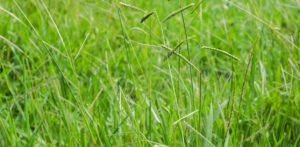
Location is everything! One consideration is that pollen counts tend to be lower on the coast, so beaches may be a good option. The desert, or alternatively snowy mountain tops, can also be ideal for pollen, although maybe not for summer travel. Does your vacation involve hiking or mountain climbing? Dust mites do not prefer elevations above 2,500 feet, so that may be a great choice as well. Wherever you decide to go check the allergen forecasts for that area. You should also check current pollen counts each day there. If high pollen counts are in the forecast, consider planning inside activities during your trip.
Checking pollen counts may not be the only forecast to make sure to monitor. As the temperatures rise, you can expect the humidity to rise as well. Many who suffer from asthma can find their condition aggravated by the high temperatures and humid climate. When planning your time outside during the summer, check the air quality for low humidity and low ozone days. You can also avoid triggers by planning around the heat of the day when possible.
Packing for Vacation
Although your favorite swimsuit may be more fun, allergy control measures should equally be at the highest priority. Staying compliant to your recommended treatment protocol in the days before you leave is crucial. These measures will support well-maintained symptoms while traveling, and for the duration of the trip.
- Make sure to pack allergy medication and immunotherapy in a carry-on bag if traveling by plane.
- Try to keep medications in original packaging and pack all medication and allergen immunotherapy in a separate, clear bag.
- Any liquid or gel medications or immunotherapy will need to individually be 3-4 ounces or smaller. Consider purchasing travel sizes if standard sizes do not meet this requirement.
- Pack 1-2 days of additional medication or immunotherapy than what will be needed in case of delay when traveling.
- It may be beneficial to set a reoccurring alarm on a phone before leaving. Normal routines may change with travel and vacation plans.
- Finally, are you traveling out of the country? If you are traveling to a non-English speaking location, bring a list of your allergies in the native language. You may also learn to say or write “I’m allergic to _____.” in the local language.
Additionally, do not forget to pack any hypoallergenic hygiene products that you regularly use. Examples might be sunscreen, after sun cream, lotions, ointments, body wash, or laundry detergent. When searching for accommodations, remember that more and more hotels offer items like mattress and pillow covers or hypoallergenic linens so you may not have to pack your own. It may also be helpful to ask about smoke free rooms, away from humid, mold friendly pool areas if possible. If pet dander is a concern, take note of whether the location is “pet friendly”.
Summer Allergy Avoidance Tips
Air in enclosed spaces such as planes and trains can sometimes be extremely dry. Consider investing in nasal saline spray or washes, as well as portable humidifier. A humidifier will likely also be beneficial if staying in a hotel for more than a night or two. Staying well hydrated with water and non-caffeinated beverages will also greatly help you combat drying out. If traveling by car, considering utilizing the heat or air conditioning and keeping windows closed. Also, turning on the heat or air 10 minutes before departure can help clear vents of any residual allergen particles.
While enjoying your destination, remember that peak pollen times are typically early in the day (specifically 5am 10am). Scheduling desired outdoor activities for later in the day or just before dusk may help to reduce exposures. Similarly to when you are home, a daily shower is helpful for allergen avoidance. Showering before bed will help to wash away allergens that have adhered themselves to your skin or hair. This is especially important to maintain so that your pillow, sheets, and the immediate space you breathe in all night is allergen free.
Insect Allergies
Another aspect of the summer allergy concerns may be insects. If stinging insect allergies are present planning ahead can alleviate a lot of anxiety and allow for a smooth trip. Always make sure to carry a minimum of two epinephrine auto injectors if it has been prescribed to you or a loved one. Make sure the epinephrine autoinjector is carried in a way it can be accessed and administered within 60 seconds of a need arising.
If you or a loved one does have life threatening allergies, it is a good idea to check with your health insurance and ensure you know where to seek medical care should the need arise while you are out of town. You may also consider carrying an allergy identification card. It can be helpful to keep a card in your wallet listing your allergies, and also emergency contact information and your healthcare provider information. This can be especially important for children who may be summer camps or staying overnight with friends or family.
Food Allergies
If food allergies are present, packing your own meals or snacks may make traveling easier. Preparing food yourself is always the safest option. Alternatively, research the local dining hot spots you wish to visit in advance of leaving for your trip. This allows you to identify safe selections from the menu or you can call to request proper menu accommodations. You may still consider packing your own snacks if you have food allergies. While it may be possible to plan meals around food allergies, snacks often present more of a challenge. Pack allergy friendly snacks, especially if lengthy plane rides are involved.
Amanda Hofmann, MPAS, PA-C, is a graduate of Duquesne University, in Pittsburgh, Pennsylvania. After spending eight years in clinical practice, she joined United Allergy Services as the vice president of clinical. Amanda is also the past president of the Association of PAs in Allergy, Asthma, and Immunology.
United Allergy Services is also on Facebook, LinkedIn, or Twitter. See other interesting and related articles on the UAS Blog.
Grass Pollen Allergy: Making the Most of Summer
Summer is finally here! Longer days, days spent by the beach or the pool, and late nights catching fireflies are on the horizon. Allergies are usually associated with the spring or fall because pollen is most active during these times. However, summer allergies, especially to grass, are also common. This grass pollen allergy can cause some of the same troublesome allergy symptoms as in other seasons.
Allergy Season
Grass begins to pollinate in the late spring, typically April or May in the northern part of the country. The pollination period in the north will then typically continue through June or July. However, in southern regions, grasses may pollinate throughout many seasons and could trigger symptoms throughout the year. These pollination time periods are when those who suffer from a grass pollen allergy notice their symptoms at their worst.
Types of Grass Pollen
There are hundreds of different kinds of grasses throughout the United States. Fortunately, not all of them are the source of summer sneezing, congestion, and itchy eyes. Some grass pollen types are small, light, dry and can travel for hundreds of miles by the wind. One group of grasses, referred to as the northern pasture grasses, cause more allergy problems than any others. These grasses include:
- common timothy grass
- sweet vernal grass
- orchard grass
- perennial rye grass
- Kentucky bluegrass
Another type of grass, bermuda, is a southern grass and is responsible for many troubling summer grass allergy symptoms. Johnson grass is another main culprit for grass pollen misery.
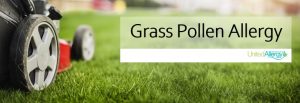
Options for Homeowners
While common Bermuda grass usually triggers allergies, some hybridized versions produce little to no pollen. One common type of hybrid Bermuda grass referred to as the "Princess 77" variety is available for homeowners. Other good hybrid Bermuda grass varieties include "Tifway" and "Santa Ana". Buffalo grass may be a good warmer climate option. This warm-season grass survives droughts and requires little supplemental watering, making it ideal for areas with watering restrictions. Types like the "UC Verde" or "609" produces only female plants, eliminating the problems of flowering and producing pollen. Although less commonly found, this is ideal for grass pollen sufferers.
Measuring Grass Pollen Counts
Those that suffer from a grass pollen allergy can benefit from checking their local pollen counts regularly. Pollen counts are determined collecting pollen on special rods. The pollen is then counted under a microscope. The pollen count is then calculated in grains per cubic meter of air. Pollen counts tend to be the highest early in the day, or often when the wind picks up just before a large rainstorm.
If you like dancing in the rain, or jumping in rain puddles, however, you are in luck. During a rainstorm and immediately following, pollen becomes still and dormant due to the rain making it damp and heavy. As the air becomes warm and dry following the storm, the pollen count will become potent again
Manage Your Grass Pollen Allergy
Pollen counts are never zero, nor will an allergy sufferer truly be able to avoid grass pollen in the summer. However, some practices may help decrease pollen exposures. For instance, utilizing the air conditioner while keeping the windows and doors to the home and car closed. Also, utilizing the dryer rather than the fresh breeze to dry clothing will help to decrease pollen exposures. It is especially important to keep windows closed when you or someone close mowing their grass.
Although it may seem like a good idea to avoid cutting the grass as much as possible, mowing grass often and keeping grass short actually causes the grass to release less pollen into the air. If a nonallergic friend or family member isn’t available to assist in cutting your grass, consider wearing a mask. Wearing masks will help to minimize the amount of pollen reaching the nasal passages. It is greatly beneficial for grass pollen sufferers to wear a mask when cutting grass or doing other yardwork.
Other Helpful Tips
Those with a grass pollen allergy should try to avoid heavily dense grassy areas, especially in early summer when pollen is the most dense and abundant. Although summer brings warmer temperatures. when you are out working in the yard, out at a park, or hiking it is recommended to wear long pants or long sleeve shirts in a light breathable fabric. This added layer of protection helps reduce the amount of pollen that comes in direct contact with your skin. Similarly, wearing sunglasses and hats also reduce pollen that contacts eyes or nestles in your hair.
Grass pollen allergy sufferers should also make a habit of changing their clothes after coming in from being outdoors, and bathing prior to getting into bed/laying on upholstered furniture. Wash bedding in very hot, sanitizing cycles once a week in peak pollen seasons. It is also beneficial to remove shoes before entering your home. And do not forget your pets! They can be major sources of tracking grass pollen into your home. Make sure to wipes them down with a wet cloth or towel before they enter your home, and make sure to bathe them more frequently in high pollen seasons. And although not always feasible, the ability to keep your pets from sleeping in your bed, in your bedroom, or on your upholstered furniture will also greatly benefit you if you suffer from grass pollen.
Symptom Relief is an Option
If someone is unsure whether grass pollen is a trigger for their troublesome nasal congestion, runny nose, postnasal drip, sneezing, and itchy watery eyes (take our allergy quiz here), seeing their provider for an allergy test may provide the clarity they are looking for!
Amanda Hofmann, MPAS, PA-C, is a graduate of Duquesne University, in Pittsburgh, Pennsylvania. After spending eight years in clinical practice, she joined United Allergy Services as the vice president of clinical. Amanda is also the past president of the Association of PAs in Allergy, Asthma, and Immunology.
United Allergy Services is also on Facebook, LinkedIn, or Twitter. See other interesting and related articles on the UAS Blog.
Independence from Summer Allergies
The Fourth of July is only one week away and that likely means many are making or finalizing plans to be outside. Are you planning to be the grill master? How about the fireworks expert? Maybe you are the ultimate host of the celebration surrounded by family and friends enjoying fireworks, picnics, swimming, and outdoor activities. Here are some of the most common summer allergy tips to for attending Fourth of July celebrations. After all, it is your right to have independence from summer allergies!
Number One Summer Allergy: Grass Pollen
During the summer months, many allergy sufferers are wary of grass pollen. They are the most common seasonal allergy triggers and are heaviest in May through August. Those that suffer from grass pollen allergies can benefit from checking their local pollen counts daily. Pollen counts tend to be the highest early in the day or as the wind picks up just before a large rainstorm.
Also, try to offer guests an indoor option during your outdoor celebration if possible. Try to offer a portion of the area where guests can sit away from tall/dense grass or shrubbery. Another options would be a non-grass surface like a deck or patio. To avoid bringing those pollens inside after a great celebration, take a shower or bath before hopping into bed. This will help rinse off any sticky allergens stuck to your body or hair before they stick to your bedding.
Summer Skin Allergy: Sunscreen Reactions
Many celebrations occur outside or around the pool, so sunscreen is important to discuss. While sunscreen is a crucial part of summer safety, sometimes it can cause a reaction much worse than a sunburn. A contact allergy to the sunscreen may present as a rash appearing where it was applied. Or it could be a reaction that appears after applying the sunblock and being exposed to the sun.
To avoid a sunscreen reaction, apply a quick and simple patch test before applying the product to your whole body. Decide on a small area, like the wrist, and apply the product. Wait at least 24 hours to make sure the skin does not react.
Summer Venom Allergy: Stinging Insects
Similar to sharing the festive star-spangled celebrations with pollen and sun, consider insects as well. We know stinging insects such as bees, wasps, hornets, and yellowjackets are most active during summer and early fall. Also, fire ants are active all year round in many southern parts of the United States.
For many of us stings and bites can be uncomfortable and painful. However, there are many picnic guests that have life-threatening reactions that can result from a sting or bite. People who know they are at risk should always carry two doses of auto injectable epinephrine. They should have the ability to access it within 60 seconds if necessary. Try to avoid the stings and bites before they occur by refraining from walking outdoors barefoot, especially in grassy areas. Another helpful trick is to skip perfume or sweet-smelling body sprays or lotions. Also, drinking from cans or bottles that have sat open and unattended should be avoided because sometimes insects can be an unpleasant surprise. Finally, when choosing the perfect outfit for the holiday weekend, leave your vivid, floral clothes in the closest.
Summer Asthma Concerns
When we think of the Fourth of July, firework displays lighting up the sky quickly come to mind. Fireworks, although beautiful and breathtaking, can create smoke and small particulate matter. This can trigger asthma for some, taking their breath away in a not so enjoyable way. If you suffer from asthma, consider watching the fireworks from an indoor location. Similar to fireworks, smoke from grills, bonfires, firepits, or outdoor fireplaces can also trigger asthma for some. Try to avoid the direct smoke pathway and leave significant distance between yourself and the source of the smoke.
Other scented products utilized during outdoor gatherings can also contribute to air pollution and can also trigger asthma. If hosting a party, it would be helpful to contact your guests and ask if certain things like scented insect repelling candles, scented tiki torch oil, odor hiding fragrances or air fresheners trigger any negative responses for them.
If there is a swimming pool, remember that while chlorine isn't an allergen, it is an irritant and can cause problems with eye and nose itching. It can also cause breathing problems in people with asthma. If undesired symptoms are occurring while swimming, jump out, take off your suit and washing the affected area with clean water and soap to remove traces of the remaining irritant. You should have a rescue inhaler on hand, if prescribed to you, to calm any respiratory symptoms should they occur.
Summer Food Allergy Considerations
Finally, what would a summer celebration be without all the tasty food and drinks? If food allergies are present, it can make attending picnics and barbeques easier to pack your own meals or snacks to have readily available. Preparing food, yourself is always the safest option, however, it may not be feasible may not allow you to feel you are enjoying all the perks of a summer celebration. It is helpful as a host to ask about any food allergies or dietary restrictions when inviting guests to the event. It is also very helpful to label what individual dishes or offers are and include a high-level recipe or ingredient list. That way guests can privately identify safe selections off the menu in and will allow them to enjoy immersing themselves in the full experience without the worry of unknown exposure.
Amanda Hofmann, MPAS, PA-C, is a graduate of Duquesne University, in Pittsburgh, Pennsylvania. After spending eight years in clinical practice, she joined United Allergy Services as the vice president of clinical. Amanda is also the past president of the Association of PAs in Allergy, Asthma, and Immunology.
United Allergy Services is also on Facebook, LinkedIn, or Twitter. See other interesting and related articles on the UAS Blog.




